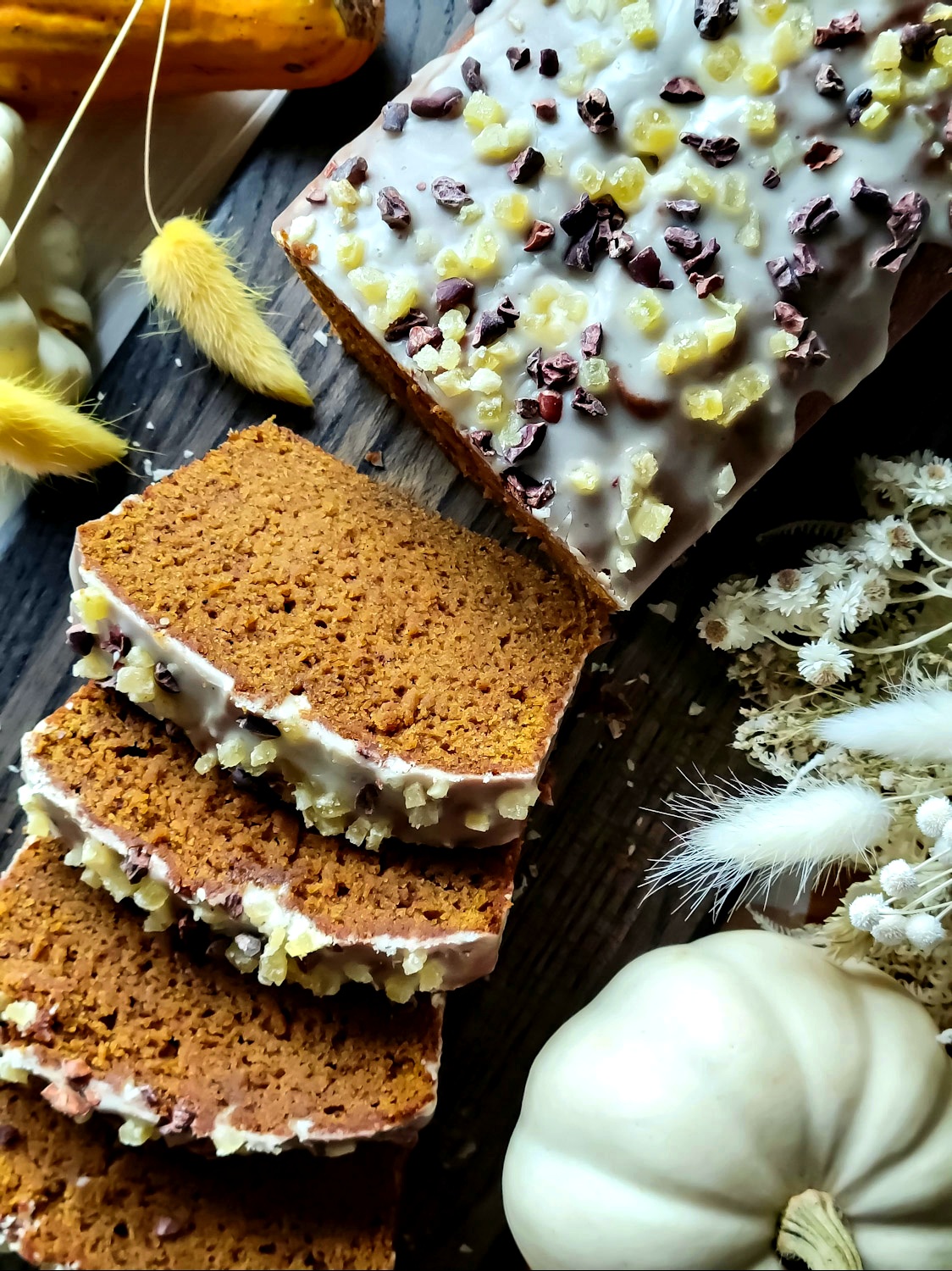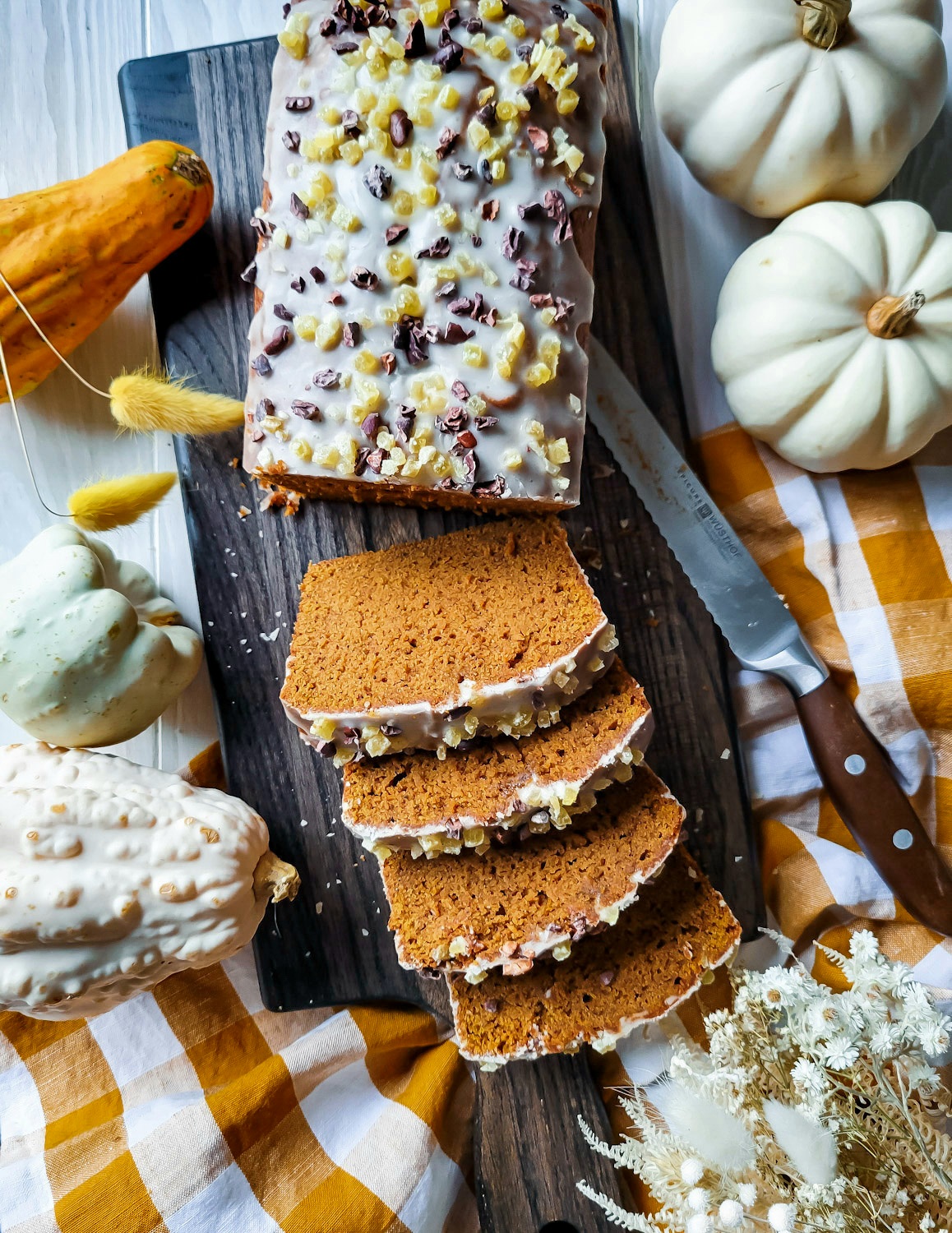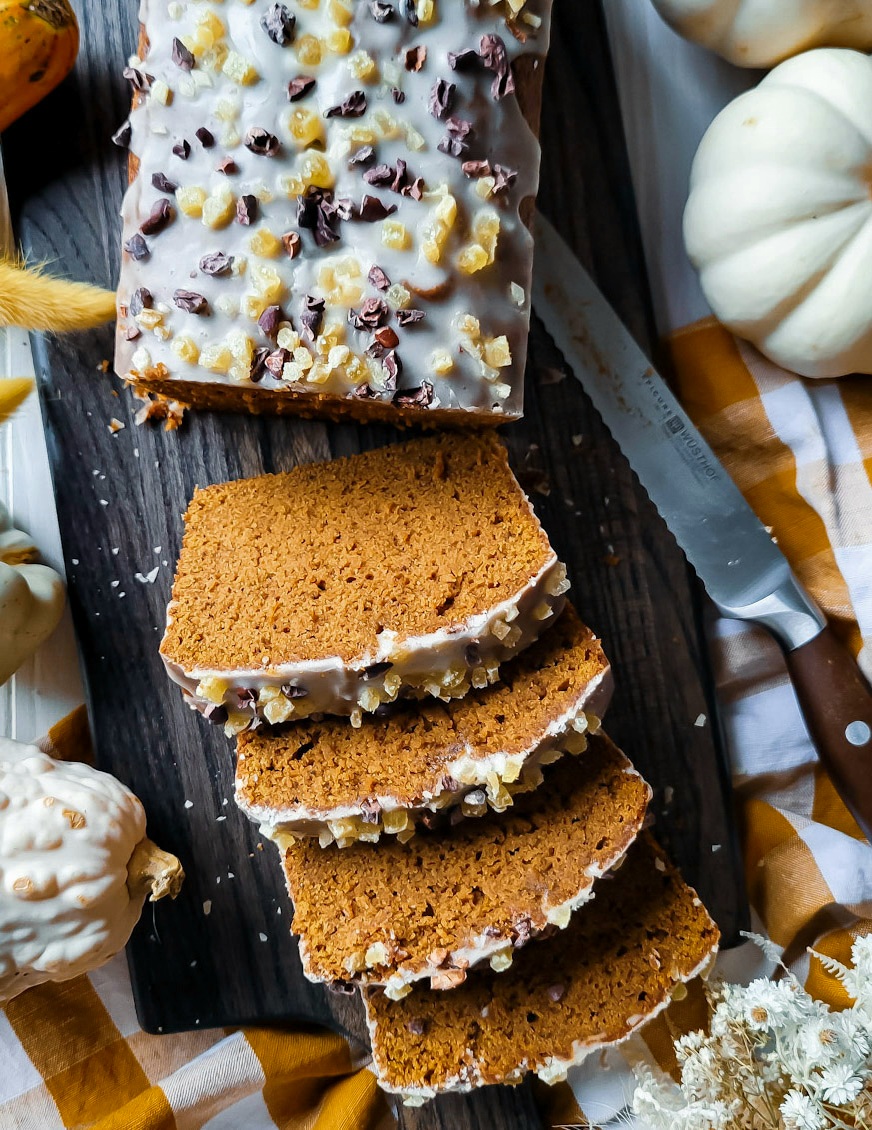There is nothing quite like the warm and spicy flavour of gingerbread. I’ve had such a love affair with this flavour ever since I was a little girl.
 Probably because I’m German. We have this spice combination in our DNA. When the weather turns cooler, out comes the Lebkuchen, or gingerbread. Interestingly, while the name most likely refers to an ancient honey cake, I always translated Lebkuchen ‘cake of life’. Because ‘to live’ in German is ‘Leben’. In my childlike brain, I thought that the name revealed how seriously we view this special blend of spices and ingredients! But the word could also come from the old German word, lebbe, meaning very sweet. I think my translation is better! Because, when you think about it, each of the spices used in gingerbread has wonderful, healing and nutritious properties, really important for life.
Probably because I’m German. We have this spice combination in our DNA. When the weather turns cooler, out comes the Lebkuchen, or gingerbread. Interestingly, while the name most likely refers to an ancient honey cake, I always translated Lebkuchen ‘cake of life’. Because ‘to live’ in German is ‘Leben’. In my childlike brain, I thought that the name revealed how seriously we view this special blend of spices and ingredients! But the word could also come from the old German word, lebbe, meaning very sweet. I think my translation is better! Because, when you think about it, each of the spices used in gingerbread has wonderful, healing and nutritious properties, really important for life.
Gingerbread Spices
Cloves. They aid in digestion, have antimicrobial properties, fight against cancer, protect the liver, boost the immune system, control diabetes, preserve bone quality, and contain anti-mutagenic properties, as well as fighting against oral diseases and headaches.
Ginger. It helps digestion, reduces nausea and helps fight the flu; highly effective against nausea; anti-inflammatory effects can help reduce symptoms of osteoarthritis; shown to lower blood sugar levels and improve various heart disease risk factors in patients with type 2 diabetes; speeds up emptying of the stomach, which can be beneficial for people with indigestion and related stomach discomfort. Ginger can lead to significant reductions in LDL cholesterol and blood triglyceride levels; it contains a substance called 6-gingerol, which may have protective effects against cancer; Gingerol, the bioactive substance in fresh ginger, can help lower the risk of infections.
Cinnamon. It raises good cholesterol and lowers bad cholesterol; it has antifungal, antibacterial, and even antiviral properties; it can help treat the symptoms of Alzheimer’s and Parkinson’s; it has anti-inflammatory properties.
Nutmeg. It has the ability to relieve pain, soothe indigestion, strengthen cognitive function, detoxify the body, boost skin health, alleviate oral conditions, reduce insomnia, increase immune system function, and prevent leukemia; and improve blood circulation.
Allspice. Eugenol found in allspice can eliminate digestive issues such as diarrhea, nausea, vomiting, and constipation, while also stimulating regularity, which reduces bloating and excess flatulence. The anti-inflammatory aspect of allspice further eases cramps, which can ease the entire process of digestion.
Cardamom. Related to ginger, it can be used in much the same way to counteract digestive problems. Use it to combat nausea, acidity, bloating, gas, heartburn, loss of appetite, constipation, and much more. This spice helps the body eliminate waste through the kidneys; relief from cardiovascular issues, and the improvement of blood circulation in the body. It is useful for curing dental diseases and urinary tract infections
Pepper. (Yes pepper- it is found in some gingerbread!) It can bring relief from respiratory disorders, coughs, the common cold, constipation, indigestion, anemia, impotency, muscular strains, dental disease, pyorrhea, diarrhea, and heart disease. It is a rich source of manganese, iron, potassium, vitamin-C, vitamin K, and dietary fiber. Black pepper is also a very good anti-inflammatory agent. I will use either black or white pepper in gingerbread for the perfect hint of heat.
And those are just the major components of classic gingerbread. Alsatian Gingerbread also includes Anise seeds, which can be an excellent remedy for asthma, bronchitis cough as well as digestive disorders such as flatulence, bloating, colicky stomach pain, nausea and indigestion.
So when they all come together, then it really is a cake to keep you healthy! Yea, that’s going to be my rational for baking gingerbread up more often- it’s just naturopathic goodness!!
And I like it with a slight heat to it- the ginger and even pepper in some recipes sends my tastebuds on a rampage! Speaking of pepper, pfeffernusse cookies, a version of gingerbread, more spicy than just sweet, are an old school German cookie that comes out in December. But I won’t wait till then to bake them. Will keep you posted.

Turning Gingerbread into a Pumpkin Loaf
Anyway, this loaf, is just a classic, moist gingerbread loaf, with the addition of pumpkin puree. ‘Cuz, why not!? Really, how often do you open a can of pumpkin for one recipe, and then realize you have enough pumpkin left over for another one? Then this is the recipe for you. It’s a wonderfully easy loaf to whip up- easy blending of ingredients you already have in the house. I have also made it with roasted puréed honeynut squash, with fabulous results. See my Brown Butter Roasted Honeynut Squash Bundt Cake for the roasting off squash for pretty well any recipe. You can use it in soups, stews, and in any baking you would use pumpkin.
This loaf is an easy two bowl recipe, using almond and brown rice flours with tapioca starch as a binder, so the texture is tender and moist, thanks to the almond flour. Bake this loaf at 350F. It may take up to 55-60 minutes, but don’t rush it.
Olive Oil Glaze
What elevates this recipe is the glaze. An olive oil glaze that ends up being the perfect visual contrast to the deep richness of the cake. And when you sprinkle cocoa nibs and diced candied ginger on top, well, now it’s really dessert. Add a scoop of ice cream (perhaps my Masala Chai Gelato!) on top, and I dare anyone to say this isn’t fit for fancy occasions?! But don’t wait for a fancy occasion. This is a wonderful snack any time of day.
Love Jen.


Pumpkin Gingerbread Loaf
Ingredients
Cake
- 1/2 cup butter, 110 grams
- 1 cup brown rice flour, 140 grams
- 2/3 cup almond flour, 65 grams
- 1/2 cup granulated sugar, 100 grams
- 1/2 cup light brown sugar, 100 grams
- 1/4 cup tapioca starch, 30 grams
- 3/4 tsp kosher salt
- 3/4 tsp baking soda
- 2 tsp ground cinnamon
- 2 tsp ground ginger
- 1 tsp ground cloves
- 1/2 tsp freshly grated nutmeg
- 1/4 tsp ground allspice
- 1/4 tsp ground anise seeds
- 1/4 tsp ground white pepper
- 3 eggs, room temperature, lightly beaten
- 1 cup pumpkin purée, not pumpkin pie filling, see Notes
- zest from one orange
- 2 tsp orange juice
Olive Oil Glaze
- 1 1/4 cups icing sugar sifted, more if needed
- 2 tbsp warm water,
- 3 tbsp olive oil, not too strong or grassy
- 2 tbsp finely chopped candied ginger
- 2 tbsp cocoa nibs, or chopped dark chocolate
Instructions
Cake
-
Reduce the oven to 350F. Lightly grease and line a 9x5 loaf pan.
-
Place the butter into a small saucepan and set it over medium heat. Cook the butter so that it melts and goes through all the stages, from bubbling and foamy till the milk solids on the bottom turn a pleasant brown and take on a nutty aroma. Be careful not to let it go further and burn. Transfer to a clean bowl or jar to cool slightly.
-
In a large bowl whisk together the brown rice flour, almond flour, both sugars, tapioca starch, salt, baking soda, cinnamon, ginger, cloves, nutmeg, allspice, anise and white pepper. Get rid of any lumps.
-
In a medium bowl mix the cooled squash purée, brown butter, eggs, orange zest and juice till smooth. Pour this into the dry ingredients and blend till smooth.
-
Spoon the batter into the prepared pan. Place this onto a baking sheet and transfer this to the centre rack of the oven. Bake until golden brown and a skewer comes out clean, about 50-60 minutes, depending on your oven.
-
Cool the cake in the pan for 20 minutes then carefully lift the cake out using the parchment paper onto a wire cooling rack to finish cooling. Let it cool completely before glazing. It can also be stored at this point, wrapped in plastic for up to 3 days. Or store in the fridge if longer.
Olive Oil Glaze
-
In a small bowl whisk the icing sugar with the warm water until smooth and thick. Slowly drizzle in the olive oil and whisk till completely smooth. Add more water or whisked icing sugar if you want it thinner or thicker. I would rather it be on the thicker side for more control.
-
Drizzle this evenly over the cake. Sprinkle with the candied ginger and cocoa nibs.
-
See blog post for more details
Recipe Notes
The pumpkin purée can be replaced with roasted puréed squash, see my Brown Butter Honeynut Squash Bundt Cake for instructions.
The base for this cake is inspired by one found in Aran Goyoaga's book, Cannelle et Vanille

can’t find the actual recipe with measurements
Hi Debra, I’m not sure why you can’t see the recipe. It is at the bottom of the post. All measurements are there. Jen